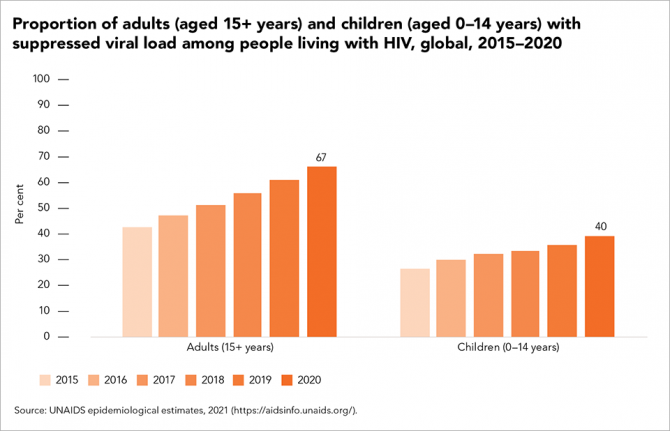

Update
Children being left behind
27 September 2021
27 September 2021 27 September 2021New HIV infections among children declined by more than half (54%) from 2010 to 2020, due mainly to the increased provision of antiretroviral therapy to pregnant and breastfeeding women living with HIV. However, that momentum has slowed considerably, leaving particularly large gaps in western and central Africa, which is home to more than half of pregnant women living with HIV who are not on treatment.
Gaps in the testing of infants and children exposed to HIV have left more than two fifths of children living with HIV undiagnosed. The number of children on treatment globally has declined since 2019, leaving almost 800 000 children (aged 0 to 14 years) living with HIV not on antiretroviral therapy in 2020. Just 40% of children living with HIV had suppressed viral loads, compared to 67% of adults. Nearly two thirds of children not on treatment are aged 5 to 14 years—children who cannot be found through HIV testing during postnatal care visits. A priority for the next five years is to expand rights-based index, family and household testing and to optimize paediatric treatment in order to diagnose these children, link them to treatment and retain them in life-long care.
Our work
Related
 U=U can help end HIV stigma and discrimination. Here’s how
U=U can help end HIV stigma and discrimination. Here’s how

27 February 2025


